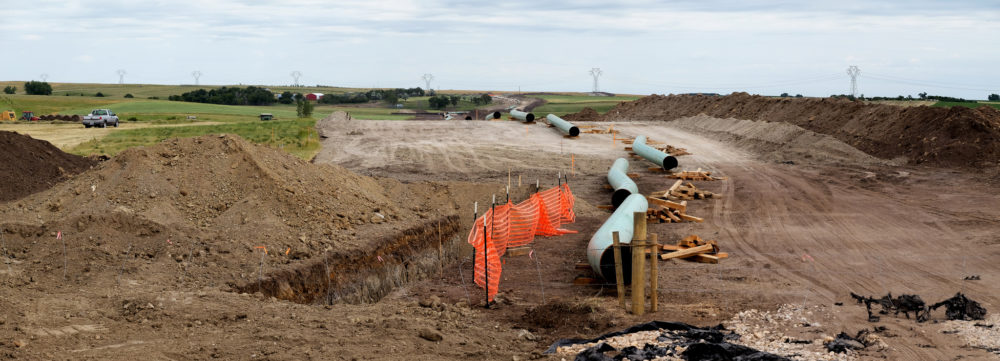As you may have heard, the Trump administration recently signed orders designed to pave the way for two controversial oil pipelines, Dakota Access (DAPL) and Keystone XL. Surprisingly, though, the main beneficiaries of this move may be Canadian, not American.
This seems clear enough the case for the Keystone XL pipeline, which was explicitly designed to move cheap, sludgy crude from the tar sands plants in Alberta, Canada, into the US market. It may seem surprising, though, that DAPL—which connects North Dakota oil fields to an oil distribution hub near Chicago—would benefit Canadian oil producers. Yet a close look at the numbers suggests that much of DAPL’s capacity could be used to move Canadian oil into the US market.
That’s because:
- After DAPL, the Bakken will have more pipeline than it has oil. The entire Bakken region currently produces a little less than 1 million barrels of oil per day, and that number could actually fall during 2017. The North Dakota Pipeline Authority estimates that the Bakken’s existing pipelines and refineries currently can handle 851,000 barrels per day (bpd) of that oil. If completed, DAPL would add 470,000 bpd of new pipeline capacity, leaving the region with a total of 1.321 million bpd of total “takeaway” capacity—meaning that Bakken pipelines and refineries could have more than 300,000 bpd of spare, unused capacity if DAPL is completed.
- Some oil-by-rail shippers probably won’t switch to DAPL. Barrel for barrel, shipping oil in railroad cars costs significantly more than shipping it by pipeline, so Bakken oil producers who currently ship their oil in rail cars may be particularly eager to switch over to DAPL. But oil-by-rail shipments have collapsed over the past two years: after peaking at more than 800,000 bpd at the end of 2014, Bakken oil-by-rail shipments fell to only about 330,000 bpd as of last November. And it looks likely that much of this remaining oil will stay on the rails. RBN Energy (subscription required) finds that Bakken producers have significant contractual commitments to ship oil by rail to Puget Sound oil refineries, and cannot easily back out of those obligations. A separate RBN Energy analysis (sorry, subscription again) finds that Puget Sound refiners make more money from refining Bakken oil than they do from refining Alaska oil—suggesting that they’ll continue to buy oil-by-rail shipments even if DAPL comes online. In the fourth quarter of 2016, Washington state refineries took in about 151,000 bpd from rail cars originating in the Bakken. If that holds up, Bakken producers would be able to shift only about 180,000 bpd from rail to DAPL—just 38 percent of the pipeline’s capacity.
- Existing pipeline shippers won’t switch to DAPL either. Oil producers in the portion of the Bakken that’s south of the Missouri River already have access to oil pipelines. Shifting from existing pipelines to DAPL doesn’t improve the economics much, if at all. Worse, switching pipelines could expose oil producers to some significant penalties under their existing pipeline contracts.
In short, if DAPL is built, the Bakken region will have a lot more pipeline capacity than it will have oil to fill it.
So who will wind up filling the pipeline with oil? As it turns out, the most likely customers are companies operating in the Alberta tar sands, which is some of the most polluting oil on the planet because of its high carbon intensity. This sludgy, hard-to-transport oil currently sells at a $15-per-barrel discount to lighter, “sweeter” crudes in major US distribution hubs—which could make it profitable to ship tar sands oil by rail to North Dakota, and then feed it into DAPL.
At this point, the potential for Canadian producers to ship oil via DAPL remains speculative. But if this thesis holds, it will be Canadian producers, not American oil companies, who win big from both DAPL and Keystone XL. And the resulting flood of Canadian crude in US markets could actually undermine the profitability of US oil producers—which would be a paradoxical result from an allegedly “America first” administration.


Comments are closed.